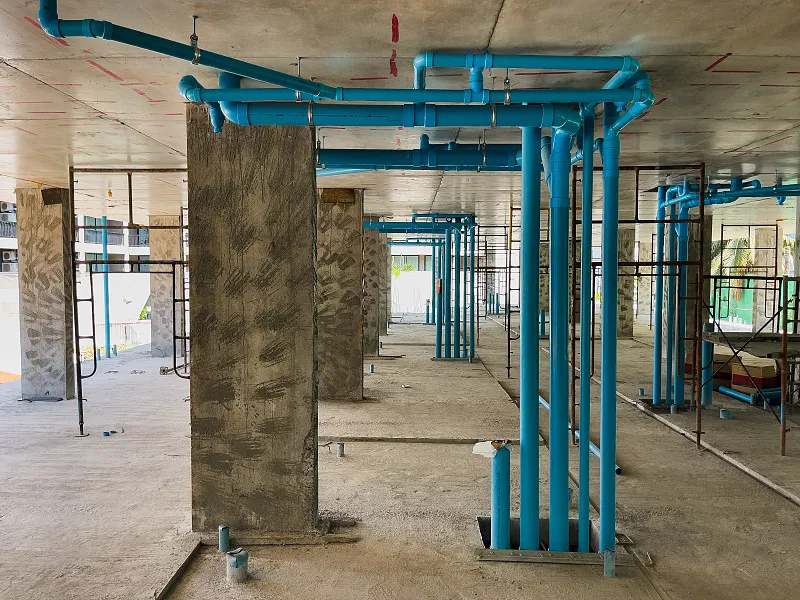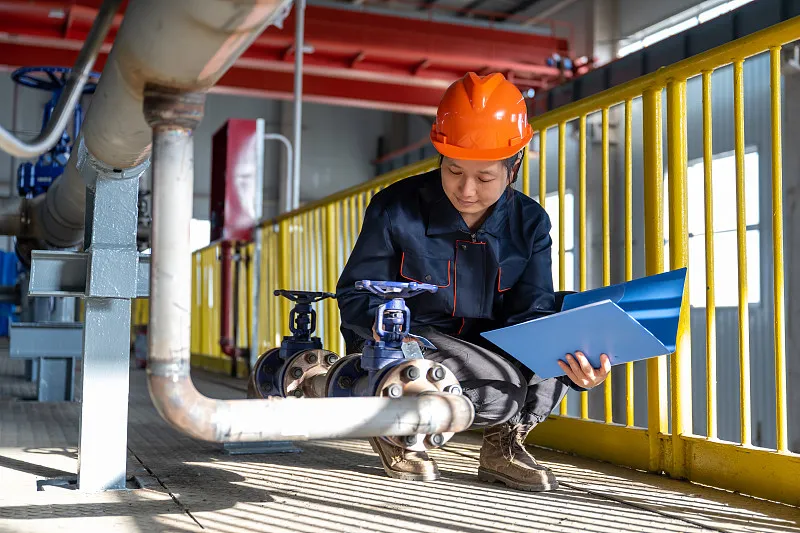Understanding PPR Pipe Fittings
PPR Pipe are commonly used for their durability, resistance to corrosion, and ability to handle high temperatures. These pipes are typically joined using heat fusion, where both the pipe and fitting are heated to a specific temperature and then fused together to create a strong bond. This method is efficient and provides long-lasting connections, but it also requires precise skills.
A PPR pipe fitting is a piece of plumbing equipment that connects sections of PPR pipes. These fittings come in various forms such as elbows, tees, couplings, reducers, and more. They play a crucial role in ensuring that the water flows smoothly and without interruption through the system.
Common Mistakes in PPR Pipe Fitting
While PPR pipes are relatively easy to work with, several mistakes can occur during installation. Understanding these common errors can help you avoid costly repairs and ensure your system works efficiently.
2.1 Incorrect Pipe and Fitting Alignment
One of the most common mistakes plumbers make during PPR pipe installation is failing to align the pipe and fitting properly. Misalignment can lead to improper sealing, which could result in leaks or reduced water pressure.
To avoid this, always ensure that the pipe and fitting are perfectly aligned before heating and fusing them. Use proper alignment tools, such as pipe holders or supports, to keep everything in place during installation.
2.2 Improper Heating of the PPR Pipe and Fitting
Another mistake that often leads to failed PPR pipe fittings is improper heating. PPR pipes and fittings need to be heated to the right temperature to create a solid bond. If the pipe or fitting is not heated enough, the joint may not fuse properly, leading to weak connections. On the other hand, overheating the pipe or fitting can cause deformation or even melting.
To get it right, always use a heat fusion machine and follow the manufacturer’s recommended heating times and temperatures. A good rule of thumb is to never rush the process, as the bond needs sufficient time to form.
2.3 Using the Wrong Tools
Using the wrong tools or equipment is another factor that contributes to bad PPR pipe fittings. For example, using a saw to cut PPR pipes can create rough edges, which makes it harder to create a secure connection. A proper pipe cutter, designed specifically for PPR pipes, will ensure a clean and smooth cut.
Additionally, using subpar heat fusion machines or tools can cause issues with the heating process, resulting in weak joints. Always invest in quality tools and equipment that are designed specifically for PPR pipe installations.
2.4 Inadequate Support and Securing of Pipes
Improper support during installation can lead to tension and stress on the pipes, causing misalignment or cracks in the pipes over time. This can lead to costly repairs and even total system failure. PPR pipes need to be adequately supported and secured to avoid these issues.
Make sure that the pipes are firmly held in place during installation, using pipe clips, holders, or supports where necessary. Avoid letting the pipes hang unsupported, as this can lead to sagging and misalignment.
The Consequences of a Bad PPR Pipe Fitting
A poor PPR pipe fitting can lead to a variety of issues that will affect the performance and longevity of your plumbing system.
3.1 Leaks and Water Damage
The most obvious consequence of a bad pipe fitting is a leak. Even a small leak can cause significant damage over time, especially if it’s in a hidden location like behind walls or under floors. Leaks can also lead to increased water bills and inefficient water usage.
3.2 Reduced Efficiency of the Plumbing System
If the fittings are not correctly installed, the flow of water can be restricted. This may result in reduced water pressure, inconsistent temperatures (for hot water systems), and overall inefficiency. These issues can make the plumbing system less reliable and more costly to operate.
3.3 Increased Repair Costs
Fixing a faulty PPR pipe fitting can be costly. In addition to the cost of replacing or repairing the pipes, you may also need to tear into walls or floors to access the faulty fittings. This can lead to extensive repair work and higher labor costs.

How to Avoid These Mistakes
Avoiding common mistakes requires attention to detail, patience, and the right tools. Here are some key steps to help you install PPR pipes correctly:
4.1 Correct Pipe and Fitting Alignment
Proper alignment is essential for a successful PPR pipe fitting. Use supports or holders to keep the pipes in place during installation. Always double-check the alignment before proceeding with the fusion process.
4.2 Perfecting the Heating Process
Pay close attention to the recommended heating times and temperatures for both the pipe and fitting. Overheating or underheating can both lead to weak joints. Use a reliable heat fusion machine and monitor the process closely.
4.3 Using the Right Tools and Materials
Invest in quality tools and equipment. A clean, smooth pipe cut is crucial for a secure fitting, so use a proper pipe cutter. Additionally, make sure you’re using high-quality PPR pipes and fittings that are designed to work together.
4.4 Ensuring Proper Support for the PPR Pipe
Make sure that the pipes are adequately supported throughout the installation. Use clips and supports to keep the pipes in place and prevent stress on the joints. This will help avoid misalignment and ensure the system remains intact.
Steps for Successful PPR Pipe Installation
Successful PPR pipe installation involves careful planning and attention to detail. Here’s a step-by-step breakdown of how to do it right:
5.1 Preparation and Planning
Before you begin, take the time to plan the layout of your piping system. Measure and mark where the pipes will be cut, and determine where the fittings will be installed.
5.2 Cutting and Cleaning the PPR Pipe
Use a proper pipe cutter to make clean, straight cuts. Remove any burrs or debris from the pipe edges before beginning the fusion process. Clean the pipe and fittings with a dry cloth to ensure a secure bond.
5.3 Heat Fusion: Getting it Right
Use a heat fusion machine to heat both the pipe and fitting to the appropriate temperature. The pipe and fitting should be fused within the recommended time frame to ensure a strong connection.
5.4 Securing the PPR Pipe
After the pipes are fused, use clips or supports to hold the pipes in place until they cool and harden. This will prevent movement and ensure that the joints remain secure.
Troubleshooting PPR Pipe Fitting Issues
Even with careful installation, issues can arise. Here’s how to troubleshoot common problems:
6.1 How to Handle Leaks
If you notice a leak at a connection, check the alignment and fusion quality. Reheat the joint and ensure it’s fused properly. If the leak persists, replace the fitting.
6.2 Fixing Misaligned Joints
If the joints are misaligned, you may need to reheat the pipes and adjust them to correct their positioning. Always ensure that the joints are aligned before fusing.
6.3 Dealing with Cracked Pipes
Cracked pipes are often a result of excessive pressure or improper support. Check the pipe for any visible cracks and replace damaged sections if necessary.
Conclusion
PPR pipe fitting mistakes can lead to costly issues such as leaks, inefficient systems, and expensive repairs. However, by understanding the common mistakes and learning how to avoid them, you can ensure a smooth installation process. Proper planning, the right tools, and attention to detail will help you achieve long-lasting, efficient plumbing systems.
FAQs
1. What causes leaks in PPR pipe fittings?
Leaks in PPR pipe fittings often occur due to misalignment, improper heating, or insufficient fusion. Ensuring correct alignment and following proper heating procedures can prevent leaks.
2. Can I fix a bad PPR pipe fitting myself?
Yes, many issues can be fixed by carefully reheating and realigning the pipe and fitting. However, if the pipe is cracked or damaged, replacement may be necessary.
3. How long do PPR pipes last?
PPR pipes are highly durable and can last up to 50 years or more with proper installation and maintenance.
4. What tools are needed for PPR pipe installation?
You will need a pipe cutter, heat fusion machine, and pipe supports to properly install PPR pipes.
5. Can PPR pipes be used for both hot and cold water systems?
Yes, PPR pipes are ideal for both hot and cold water systems due to their high resistance to temperature and pressure changes.


















